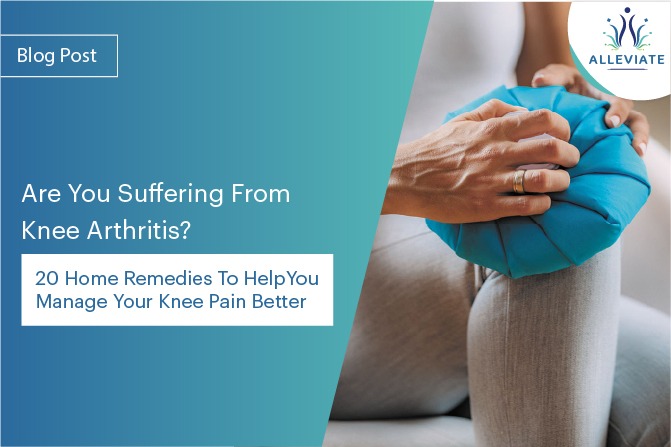Introduction
Quadriceps Strengthening Exercises


Maintaining strong and balanced muscles around the knee, especially the quadriceps, can provide essential support and stability. The quadriceps muscles play a crucial role in supporting the knee joint. Strengthening these muscles can help stabilize the knee and reduce stress on the joint.
A study published in the “Journal of Orthopaedic & Sports Physical Therapy” (2009) emphasized the effectiveness of quadriceps-strengthening exercises in managing knee pain, particularly in individuals with osteoarthritis.
Benefits of Quadriceps Strengthening in Knee Osteoarthritis
- Pain Reduction : Strengthening the quadriceps helps distribute forces more evenly across the knee joint, reducing the load on the affected area. This can result in decreased pain for individuals with knee osteoarthritis.
- Improved Joint Stability : Strong quadriceps provide better support and stability to the knee joint. Enhanced stability can prevent excessive movement and reduce the risk of further damage, promoting overall joint health.
- Enhanced Joint Function : Quadriceps strengthening exercises improve joint function by optimizing the mechanics of the knee. This can lead to smoother movement, increased range of motion, and improved overall functionality.
- Delaying Disease Progression : Regular quadriceps strengthening may help slow down the progression of knee osteoarthritis. By maintaining muscle strength, individuals can better cope with the challenges posed by the condition.
- Better Weight Distribution : Strengthening the quadriceps assists in maintaining proper alignment of the knee joint. This alignment is crucial for optimal weight distribution, reducing stress on vulnerable areas affected by osteoarthritis.
- Prevention of Muscle Atrophy : Knee osteoarthritis can contribute to muscle atrophy, where muscles weaken due to inactivity or disuse. Quadriceps strengthening exercises help counteract this atrophy, preserving muscle mass and function.
Exercise Tip
- Straight Leg Raises : While seated, extend one leg straight, hold briefly, and lower it back down. Repeat with the other leg.
- Quad Sets : Sit or lie down, straighten one leg, and tighten the thigh muscles. Hold for 5-10 seconds, then relax. Repeat on each leg.
- Mini Squats : Stand with feet shoulder-width apart and perform gentle squats, ensuring the knees stay behind the toes.
Heat and Cold Therapy


Alternating between heat and cold applications can help alleviate knee pain. Heat improves blood flow and relaxes muscles, while cold reduces inflammation and numbs the area. A review in the “Journal of Clinical Medicine” (2019) highlighted the efficacy of thermal interventions for managing knee osteoarthritis.
- Application Tips : Use a heat pack or warm towel for 15-20 minutes, followed by a cold compress for 10-15 minutes.
Omega 3 Supplements


Amid various treatment options for knee osteoarthritis omega-3 supplements have emerged as a natural remedy with potential benefits in managing the symptoms of knee osteoarthritis. In this guide, we’ll explore the role of omega-3 fatty acids, their benefits, and considerations for individuals seeking relief from knee osteoarthritis.
Omega-3 fatty acids are essential polyunsaturated fats that play a crucial role in various bodily functions. The three main types of omega-3 fatty acids are:
- Alpha-Linolenic Acid (ALA) : Found in plant oils, ALA is converted to eicosapentaenoic acid (EPA) and docosahexaenoic acid (DHA) in the body.
- Eicosapentaenoic Acid (EPA) : Present in fatty fish and algae, EPA has anti-inflammatory properties.
- Docosahexaenoic Acid (DHA) : Abundant in fatty fish, DHA is essential for brain health and has anti-inflammatory effects.
Benefits of Omega-3 Supplements in Knee Osteoarthritis
- Anti-Inflammatory Properties : Omega-3 fatty acids, particularly EPA and DHA, have demonstrated anti-inflammatory effects. In knee osteoarthritis, inflammation contributes to pain and joint damage, and omega-3s may help mitigate these effects.
- Cartilage Protection : Omega-3s play a role in maintaining the integrity of joint cartilage. Knee osteoarthritis involves the gradual breakdown of cartilage, and omega-3 supplementation may contribute to its protection.
- Improved Joint Mobility : Omega-3 fatty acids, found in fish oil and certain seeds, possess anti-inflammatory properties that may benefit individuals with knee pain. A study published in the “Journal of the American College of Nutrition” (2017) indicated that omega-3 supplementation can reduce pain and improve function in knee osteoarthritis.
- Supplementation Tip : Consider adding fatty fish (like salmon or mackerel) to your diet or taking omega-3 supplements after consulting with a healthcare provider.
Diet Modification for Collagen Production


Collagen is a crucial component of joint tissues, and promoting its production can support knee health. A review in the “Journal of Arthritis Research & Therapy” (2018) emphasized the role of nutrition in collagen synthesis.
Dietary Tips
- Include collagen-rich foods like bone broth, chicken, fish, and colorful vegetables in your diet.
- Vitamin C-rich foods (citrus fruits, strawberries) aid in collagen formation.
Yoga for Joint Flexibility
Yoga offers gentle stretching and strengthening exercises that can enhance joint flexibility and reduce knee pain. A study in the “Journal of Alternative and Complementary Medicine” (2015) highlighted the positive effects of yoga on pain and physical function in individuals with knee osteoarthritis.
Yoga Poses


- Child’s Pose : Kneel on the floor, sit back on your heels, and reach forward with your arms.
- Downward-Facing Dog : From a plank position, lift your hips towards the ceiling, forming an inverted V shape.
- Important Note : Before starting any exercise regimen or supplementation, it’s crucial to consult with a healthcare professional, especially if you have underlying medical conditions.
Collagen and Sodium Hyaluronate Supplements
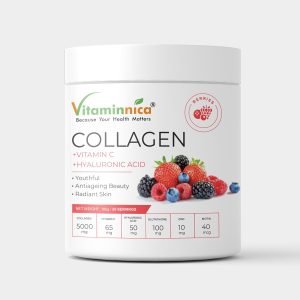

Collagen is a crucial component of joint cartilage, providing structural support and promoting elasticity. Sodium hyaluronate is a substance that occurs naturally in the synovial fluid of joints, acting as a lubricant and shock absorber.
Supplement Suggestions
- Collagen Supplements : Daily intake of collagen supplements can support joint health and potentially alleviate knee pain. Types II collagen supplements are specifically targeted for joint support.
- Sodium Hyaluronate Supplements : These supplements may help maintain synovial fluid viscosity, supporting joint lubrication.
Hamstring Strengthening


Strengthening the muscles around the knee, including the hamstrings, can help provide better support to the joint, reducing stress and improving stability.
Exercise Recommendations
- Hamstring Curls : Lie on your stomach, bend your knee, and lift your heel toward your buttocks.
- Bridge Exercise : Lie on your back, bend your knees, and lift your hips off the ground, engaging your hamstrings.
Wax Bath for Knees


Wax bath therapy involves immersing the affected knee in warm, melted wax. This method can help soothe joint pain, reduce stiffness, and enhance blood circulation.
Application Tips
- Wax Temperature: Ensure the wax is at a comfortable temperature, not too hot, before immersing the knee.
- Duration: Dip the knee into the wax, then remove and let it cool for a moment before repeating. Continue for 15-20 minutes.
Swimming with Hydrotherapy


Static stretching in warm water is easier than land. A great tip here is to use the Swimming provides a low-impact form of exercise, and hydrotherapy involves the use of water for pain relief and treatment. This combination can offer both cardiovascular benefits and joint support.
Swimming Tips
- Low-Impact Strokes : Choose swimming strokes that are gentle on the knees, such as breaststroke or backstroke.
- Hydrotherapy Sessions : Utilize the buoyancy of water for gentle exercises and stretches.
CBD Oil for Knees
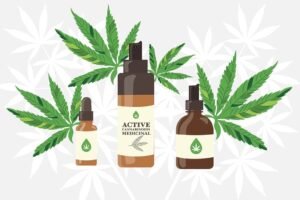

CBD (cannabidiol) is a compound derived from the cannabis plant, known for its anti-inflammatory and analgesic properties.
CBD Oil Application
- Topical Application: Apply CBD oil topically on the affected knee, allowing it to be absorbed directly into the skin.
- Oral Consumption: Ingesting CBD oil may provide overall anti-inflammatory benefits that can positively impact knee pain.
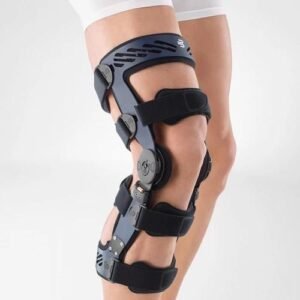

Knee braces and supports provide external stability to the knee joint, reducing stress and preventing further damage during activities that put strain on the knees.
Application Tips
- For Long Walks or Strenuous Activity: Wear knee braces when engaging in activities that involve prolonged walking, running, or strenuous movements.
- Proper Fit: Ensure the knee brace fits snugly without causing discomfort or impeding blood circulation.
Weight Management


Maintaining a healthy weight is crucial for reducing the load on the knee joints, minimizing stress, and preventing further deterioration.
Weight Management Strategies
- Cardiovascular Exercise : Engage in low-impact exercises such as swimming or cycling to support weight loss.
- Lifestyle Modifications : Adopt a healthy lifestyle with balanced nutrition and regular physical activity.
- Calorie Deficit : Create a calorie deficit through a combination of diet and exercise to promote weight loss.
Non-Steroidal Anti-Inflammatory Drugs (NSAIDs)
NSAIDs can provide short-term relief from knee pain by reducing inflammation and alleviating pain. However, they should be used cautiously due to potential side effects.
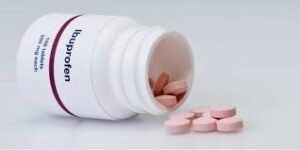

Usage Guidelines
- For Flare-Ups : Use NSAIDs during flare-ups to manage inflammation and pain.
- Cautionary Measures : Avoid prolonged use due to potential gastric, renal, and liver side effects.
- Consultation with a Healthcare Professional : Seek advice from a healthcare professional before starting NSAID use.
Green-Lipped Mussel Extract Supplements
Green Mussel Extract is derived from the New Zealand green-lipped mussel, scientifically known as Perna canaliculus. This mollusk is native to the coastal waters of New Zealand and is renowned for its rich nutritional profile, including omega-3 fatty acids, glucosamine, chondroitin, and other essential nutrients.
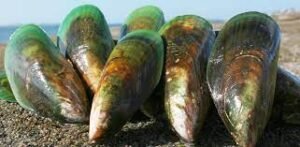

Key Components of Green Mussel Extract
- Omega-3 Fatty Acids
- Glucosamine and Chondroitin
- Antioxidants
Potential Benefits of Green Mussel Extract in Knee Arthritis
- Anti-Inflammatory Properties : The omega-3 fatty acids, especially ETA, present in Green Mussel Extract have been associated with anti-inflammatory effects.
- Cartilage Support : Glucosamine and chondroitin are vital for maintaining the integrity of joint cartilage. Green Mussel Extract provides these components naturally, potentially aiding in the preservation of cartilage and slowing down the progression of arthritis.
- Pain Relief : The anti-inflammatory nature of Green Mussel Extract may contribute to pain relief for individuals experiencing knee arthritis.
Medical Marijuana


Medical marijuana, with its active components like THC and CBD, has shown anti-inflammatory and analgesic properties that may benefit individuals with knee pain.
Medical marijuana refers to the use of the cannabis plant or its extracts for medicinal purposes. The two main components of interest are:
- Tetrahydrocannabinol (THC) : THC is the psychoactive compound in cannabis responsible for the “high” sensation. It also possesses analgesic (pain-relieving) properties.
- Cannabidiol (CBD) : CBD is another major cannabinoid in cannabis. It does not produce a psychoactive effect but has anti-inflammatory and analgesic properties.
Potential Benefits for Knee Arthritis
- Pain Relief : Both THC and CBD have demonstrated pain-relieving properties. They may interact with the body’s endocannabinoid system to modulate pain signals, providing relief for individuals with knee arthritis.
- Anti-Inflammatory Effects : CBD, in particular, is known for its anti-inflammatory effects. Inflammation is a key contributor to arthritis symptoms, and reducing it can potentially alleviate pain and improve joint function.
- Improved Sleep : Chronic pain often disrupts sleep patterns. Certain strains of medical marijuana, especially those with higher CBD content, may help improve sleep quality for individuals with knee arthritis.
- Muscle Relaxation : Medical marijuana may have muscle relaxant properties, contributing to the relaxation of muscles around the affected knee joint.
Considerations and Usage
- Consultation with Healthcare Professionals : Before considering medical marijuana for knee arthritis, individuals should consult with healthcare professionals, including rheumatologists or pain management specialists. They can provide personalized advice based on the individual’s health status and medical history.
- Legal Considerations : The legality of medical marijuana varies globally and within different regions. Individuals should be aware of local laws and regulations governing the use of medical marijuana.
Static Cycling
Static cycling is a low-impact exercise that helps improve joint flexibility and strengthen the muscles around the knee, providing support and reducing stress on the joint.


Cycling Tips
- Low Resistance : Begin with low resistance and gradually increase as your strength improves.
- Regular Sessions : Aim for regular, short cycling sessions to avoid strain.
Well-Fitted, Comfortable Footwear
Wearing properly fitted and comfortable footwear is essential for maintaining proper alignment and load distribution, reducing stress on the knees.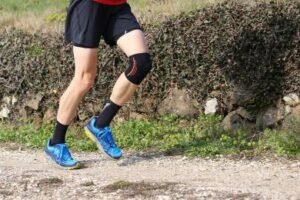

Footwear Recommendations
- Arch Support : Choose shoes with good arch support to promote proper alignment.
- Cushioning : Opt for shoes with adequate cushioning to absorb shock during walking or other activities.
Treatment of Concurrent Osteoporosis
Osteoporosis can exacerbate knee pain. Addressing bone health through calcium and vitamin D supplementation, bisphosphonates, and teriparatide may support overall musculoskeletal well-being.
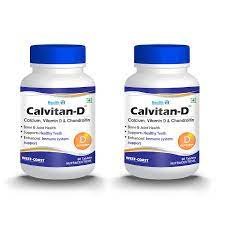

Osteoporosis Treatment Strategies
- Calcium and Vitamin D : Adequate intake supports bone health.
- Bisphosphonates : Prescription medications to strengthen bones.
- Teriparatide : A hormone that stimulates bone formation.
Home Setting Adjustments
Modifying your home environment can help reduce knee strain. Simple changes like minimizing stair usage, avoiding squatting, and refraining from sitting cross-legged can contribute to knee comfort.
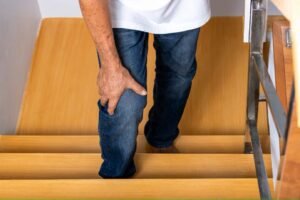

Home Setting Tips
- Stair Reduction : Minimize stair use; consider installing handrails if necessary.
- Avoid Squatting : Use alternatives or aids for tasks that involve squatting.
- Cross-Legged Sitting : Opt for chair sitting instead of sitting cross-legged.
Knee-Strengthening Aerobics
Incorporating knee-strengthening aerobics can improve joint stability, reduce pain, and enhance overall knee function.
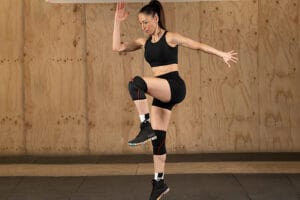

Aerobic Exercise Suggestions
- Low-Impact Dance Aerobics : Engage in dance routines designed for joint health.
- Moderate Intensity : Choose exercises with moderate intensity to avoid excessive strain.
Conclusion
These home remedies, when incorporated into your routine with care and consistency, can contribute to relieving knee pain and promoting joint health. As always, consult with a healthcare professional such as at ALLEVIATE PAIN CLINIC before starting any new exercise or treatment regimen, especially if you have pre-existing conditions or are taking medications.
References
- “Oral Supplementation of Specific Collagen Peptides Combined with Calf-Strengthening Exercises Enhances Function and Reduces Pain in Achilles Tendinopathy Patients,” https://www.ncbi.nlm.nih.gov/ pmc/ articles / PMC6356661/
- “Viscosupplementation with intra-articular hyaluronic acid for treatment of knee osteoarthritis: A review,” https://www.ncbi.nlm.nih.gov/pmc/ articles/ PMC4162447/
- “Cannabidiol (CBD) and its analogs: a review of their effects on inflammation,” https://www.ncbi.nlm.nih.gov/pmc/ articles/ PMC7023045/
- “Cannabidiol: a new hope for patients with Dravet or Lennox-Gastaut syndromes,” https:// www.ncbi.nlm.nih.gov/pmc/ articles/ PMC4707667/
- Sharma L, Pai YC, et al. (1998). Effect of knee aligning brace on joint moments during walking in medial compartment osteoarthritis of the knee. J Rheumatol. 1998 Dec;25(12):2383-2390.
- Felson DT, Zhang Y, et al. (1997). The incidence and natural history of knee osteoarthritis in the elderly. The Framingham Osteoarthritis Study. Arthritis Rheum. 1997 Apr;40(4):728-733.
- Trelle S, Reichenbach S, et al. (2011). Cardiovascular safety of non-steroidal anti-inflammatory drugs: network meta-analysis. BMJ. 2011 Jan 11;342:c7086.
- Gibson SL, Gibson RG. (2019). Green-lipped mussel extract in arthritis. Lancet. 2019 Jun 15;393(10189):2356.
- Fine PG, Rosenfeld MJ. (2013). The Endocannabinoid System, Cannabinoids, and Pain. Rambam Maimonides Med J. 2013 Oct; 4(4): e0022.
- Lane, N. E., Michel, B., Bjorkengren, A., & Oehlert, J. W. (1994). The risk of osteoarthritis with running and aging: a 5-year longitudinal study. Journal of Rheumatology, 21(2), 269-273.
- Kerrigan, D. C., Johansson, J. L., & Bryant, M. G. (1995). Moderate-heeled shoes and knee joint torques relevant to the development and progression of knee osteoarthritis. Archives of physical medicine and rehabilitation, 76(9), 847-851.
- Neer, R. M., Arnaud, C. D., Zanchetta, J. R., Prince, R., Gaich, G. A., Reginster, J. Y., … & Mitlak, B. H. (2001). Effect of parathyroid hormone (1–34) on fractures and bone mineral density in postmenopausal women with osteoporosis. New England Journal of Medicine, 344(19), 1434-1441.
- Maly, M. R., Costigan, P. A., & Olney, S. J. (2006). Contribution of psychosocial and mechanical variables to physical performance measures in knee osteoarthritis. Physical therapy, 86(6), 800-810.
- Bartels, E. M., Lund, H., Hagen, K. B., & Dagfinrud, H. (2007). Aquatic exercise for the treatment of knee and hip osteoarthritis. The Cochrane Library.

